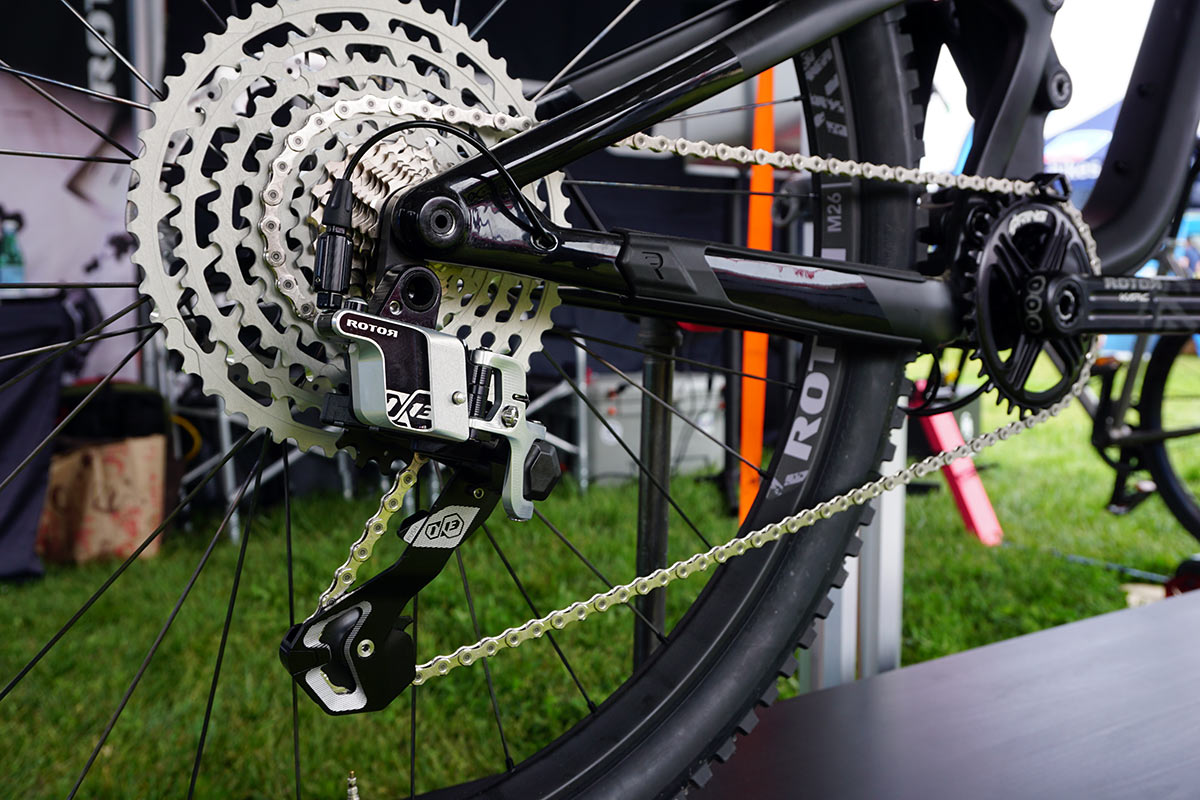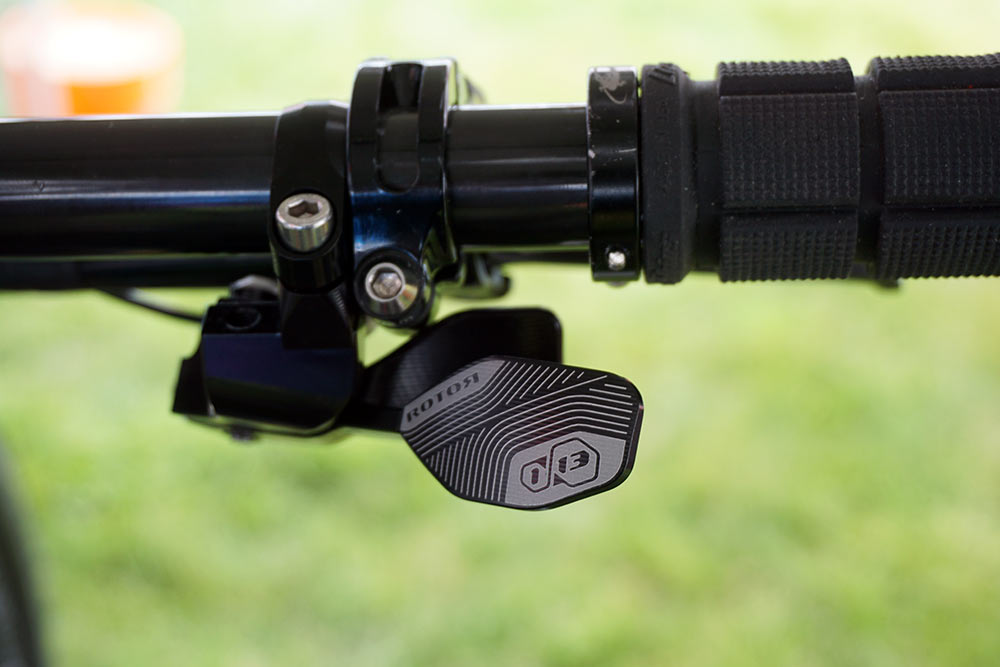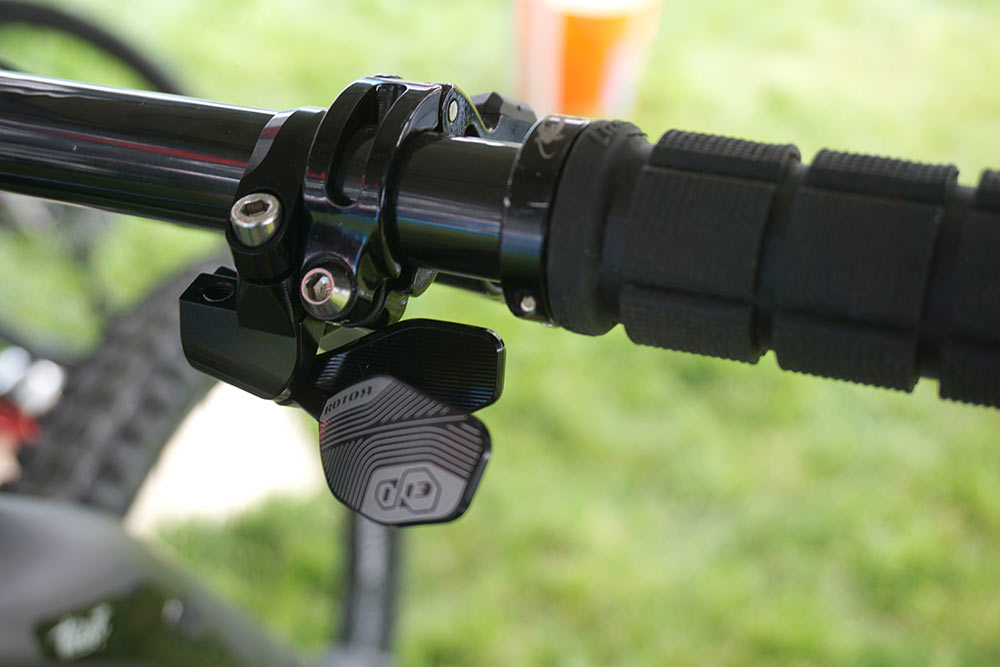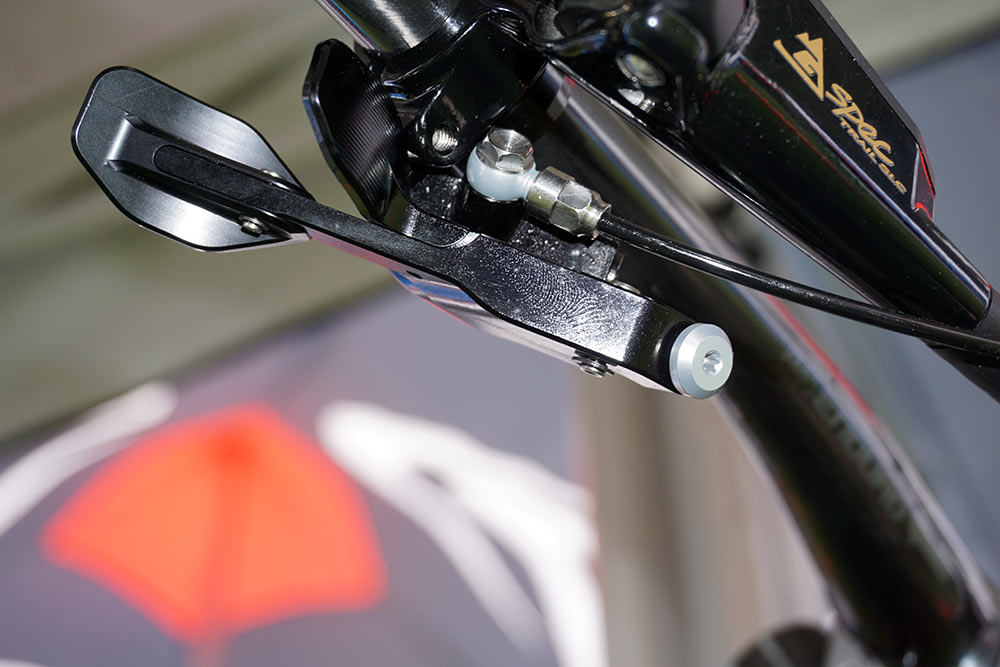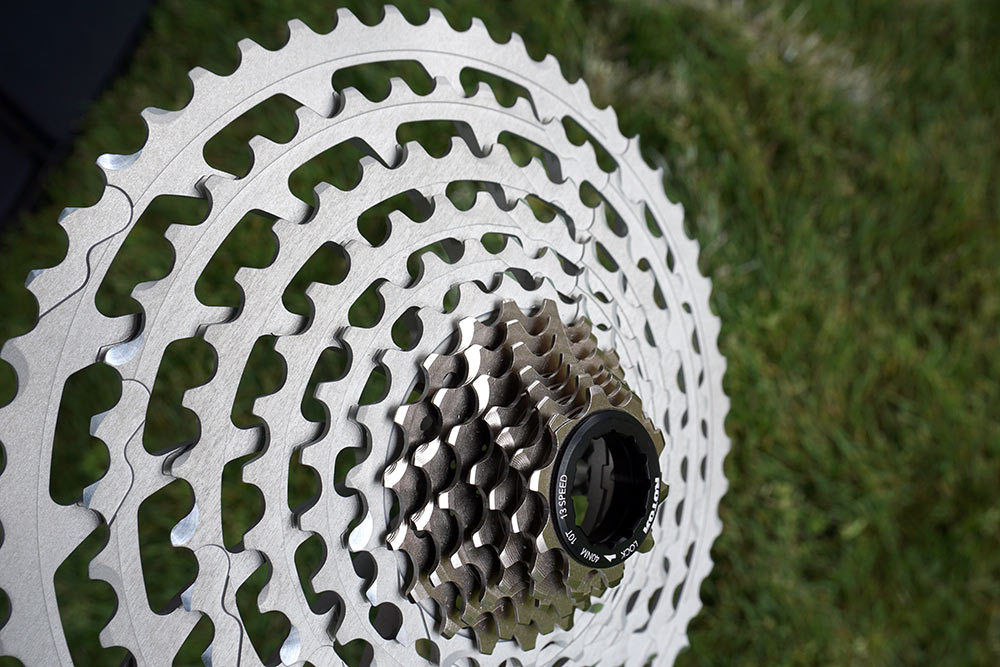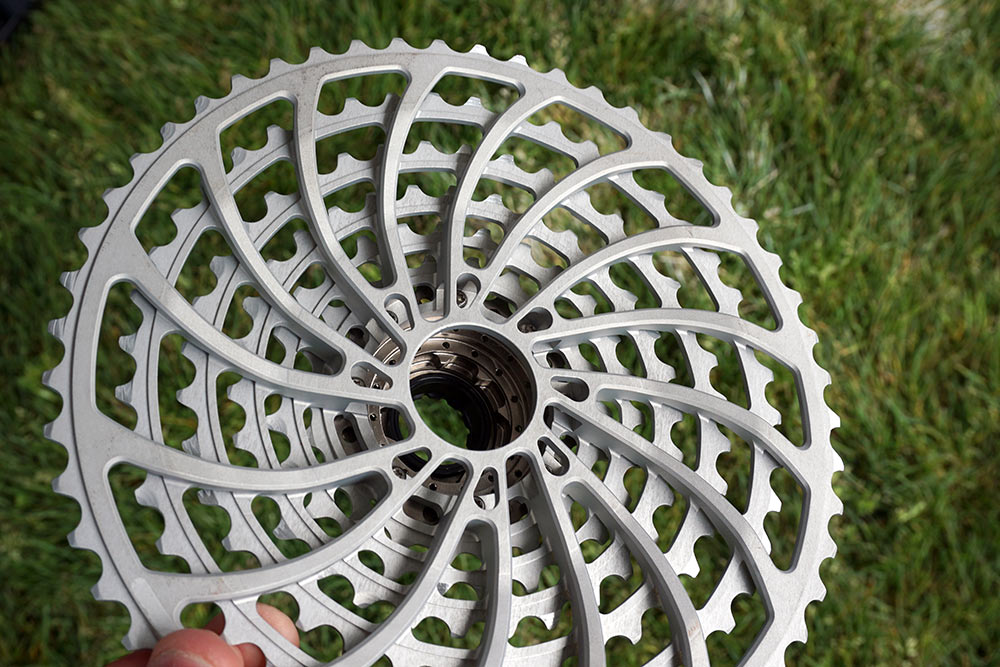Hot on the heels of their hydraulic shifting road bike group finally becoming available at retail, the new Rotor 1×13 mountain bike is showing how you can run a completely hydraulic system on your MTB, too. Using the same rear derailleur as the road group, it brings some unique advantages to the rear part of the drivetrain…and the lever. Here’s how:
Perhaps the most unique feature of the Rotor rear derailleur is the “return to origin” button on the outside. Press it and the derailleur drops to the smallest cog within one or two wheel rotations, which can make for super quick wheel swaps compared to having to reach up to the shifter to bring the chain down to the small cog. And in the unlikely event the hose breaks or something else goes wrong, you can physically push the derailleur into position so you’re not stuck riding out with a too-easy or too-hard gear.
The lever is also unique in that there are two paddles for the same purpose. When riding normal, the main thumb paddle is easiest to reach, and it operates the same as their road levers: Push just a little to release pressure and move the chain to a harder (smaller) cog. Push a little more to start indexing up the cassette to an easier (larger) cog.
But when you start descending, particularly on really steep sections when you’re off the back of the saddle, the inner paddle becomes easier to reach, so you can still shift easily when you’re in full gas mode without compromising your grip on the bar. Nice.
It’s a one-way system, using the lever to push fluid to the derailleur, and the derailleur’s return spring to push fluid back. So it only requires one tiny line, which is easy to hide inside a frame. The lever pushes an adjustable rod into the piston, so you can fine tune the contact point to suit your riding style.
The 13-speed cassette uses an alloy upper half and steel lower, starting with a 10-speed small cog and 52-tooth large one. That’s a 520% range, but with a more linear spread between cogs.
Meaning, some of the gear steps at the small end of the cassette might seem like bigger jumps, but then you’ll have smaller jumps as you go up the cassette to the larger cogs. Different strokes…here’s a little video about it:
Want more killer tech videos? Subscribe to Bikerumor on YouTube!
They’re shooting for an August soft launch for some of their athletes to start riding it, then a little later for an official release (likely at Eurobike in September), then probably a little later for anyone to get riding samples. We’re on the list, so we’ll keep you posted.
